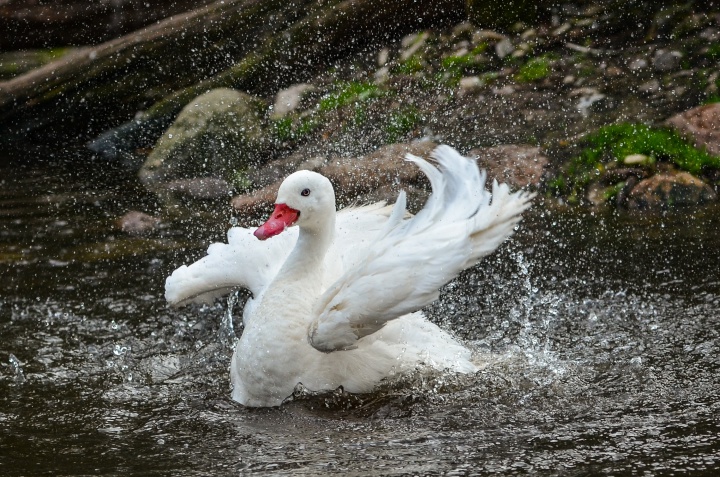Swan-derful News: Ancient Waterfowl Found At St Bathans
Palaeontologists digging near St Bathans in Central Otago have discovered a fossil that probably belonged to the Southern Hemisphere’s oldest known swan species.

Researchers believe the Coscoroba Swan of South America, Coscoroba coscoroba, is the closest living relative of the ancient Bannockburn Swan. Image: Olaf Oliviero Riemer, CC BY-SA 3.0
The Bannockburn Swan, Notochen bannockburnensis, lived between 16 and 19 million years ago on Lake Manuherikia, a huge lake covering most of modern Central Otago.
Scientists from New Zealand and Australia have described the bird from a fossilised wing bone, preserved near St Bathans in a layer of prehistoric mud called the Bannockburn Formation.
Although damage to the wing bone makes determining this animal’s exact size difficult, it was probably slightly larger than the Black Swans that are common in Aotearoa New Zealand today.
Scientists have now discovered nine ancient waterfowl species at St Bathans, and the Bannockburn Swan is the largest.
Like today’s swans, it would have foraged for food in the water, but also probably spent some of its time grazing on land.
Notochen bannockburnensis was described in a paper published this week in the journal Zootaxa.
The paper’s lead author, Dr Trevor Worthy of Flinders University, Adelaide, says the wing bone’s shape and large size suggest it belonged to a prehistoric swan.
“This bone is rather damaged but it clearly belonged to a member of the geese and swans group of waterfowl. We can’t say with total certainty what sort of giant waterfowl this bird was, but we think a swan is most likely which is why we’ve called it the Bannockburn Swan.”
Today, the Southern Hemisphere’s only native swans are Australasia’s Black Swan and the Coscoroba Swan of South America – the Bannock Swan’s closest living relative. These birds are a separate group from Northern Hemisphere swans.
Canterbury Museum Senior Curator Natural History Dr Paul Scofield says the discovery of the Bannockburn Swan provides a clearer picture of how swans, geese and their close relatives evolved.
“This swan and another goose-like bird we’ve found at St Bathans are the oldest members of the Anserinae family, which contains swans and geese, found in the Southern Hemisphere. They show a long history of the group in the southern half of the world. This is another example of finds from St Bathans helping us understand bird evolution.”
The research was funded by the Australian Research Council Discovery Projects, the New Zealand Marsden Fund, Canterbury Museum, Flinders University, the Museum of New Zealand Te Papa Tongarewa and the University of New South Wales.
To cite this publication: Worthy TH, Scofield RP, Hand SJ, De Pietri VL, Archer M (2022). A swan-sized fossil anatid (Aves: Anatidae) from the early Miocene St Bathans Fauna of New Zealand. Zootaxa 5168 (1). https://doi.org/10.11646/zootaxa.5168.1.3


 NIWA: Flooding From Underneath - New Tool Reveals Shallow Groundwater Elevations
NIWA: Flooding From Underneath - New Tool Reveals Shallow Groundwater Elevations Commerce Commission: Commission Concludes Auckland Airport Over-charging By $190 Million
Commerce Commission: Commission Concludes Auckland Airport Over-charging By $190 Million The Future Is Rail: Ferry Decision - Common Sense Prevails
The Future Is Rail: Ferry Decision - Common Sense Prevails Aotearoa Food Rescue Alliance: Grocery Market Reform Must Include Mandatory Food Rescue Partnerships
Aotearoa Food Rescue Alliance: Grocery Market Reform Must Include Mandatory Food Rescue Partnerships Hugh Grant: Zero Trust Security - A Buzzword Or The Ultimate Protection?
Hugh Grant: Zero Trust Security - A Buzzword Or The Ultimate Protection? Bill Bennett: Comcom revisits fibre rules as competition intensifies
Bill Bennett: Comcom revisits fibre rules as competition intensifies



